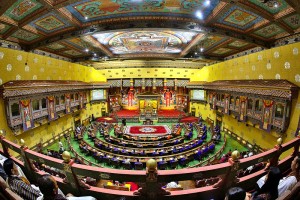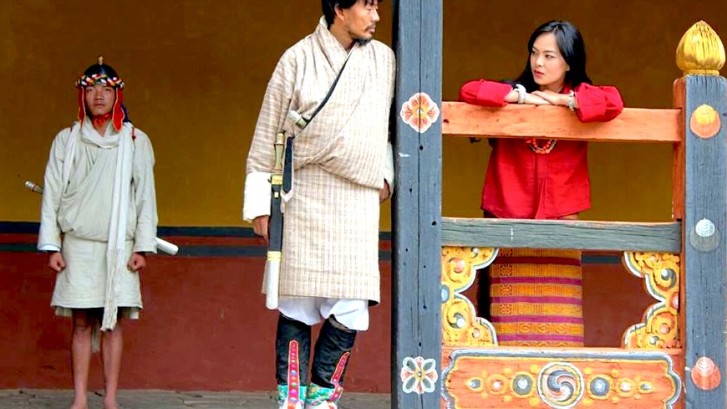BHUTAN NEEDS A COMPREHENSIVE TOURISM POLICY
After a one-year long review of the tourism industry, the National Council’s Economic Affairs Committee called for an urgent need of a comprehensive tourism policy and recommended a revision of the tourism tariff.
These were among the seven recommendations deliberated in the House yesterday.
“Considering the significance of the sector and the exponential rise in tourist arrivals, it has become imperative to have a comprehensive policy to guide the sector including unregulated regional tourists,” the committee’s chairperson Pema Tenzin said.
Without a policy, the Bhutan Tourism Rules, schedules of tariff for international tourists 1995 and the Trekking in Bhutan Rules and Regulations 1996 regulate the sector today.
The committee also recommended to enforce a proper pricing mechanism.
Dagana Councillor Sonam Dorji said the tariffs were revised in January 2012 from USD 200 to 250 for peak season and from USD 165 to 200 for lean seasons and a royalty of USD 65 to the government.
“Given the competitiveness of the sector, the existence of multiple players in a fixed tariff system has led to predatory pricing among operators,” he said. “Hence the issue of undercutting which could undermine the core value proposition of Bhutan’s tourism which is to ensure high value and low impact.”
“While retaining the royalty component, the government could drop the tariff itself to ensure that the tourism system maximizes benefits and opportunities and minimizes tourism leakages,” Sonam Dorji said.
Other members also said that the fixed tariff caused wrong marketing and awareness with the misunderstanding of all-inclusive nature of tariff.Since its inception in 1974, the country has followed a policy of ‘high value, low volume’ tourism, which kept it well regulated.
In 2009, the government announced the policy of ‘high value, low impact’ as part of its Accelerating Bhutan’s Socio-Economic Development initiative and set a target of 100,000 tourists a year by 2012 opening the country to regional tourists as well.
Until 2008, only 27,000 dollar paying tourists and 12,000 regional tourists visited the country. The number rose in 2014 to 133,480 tourists, the majority of which were regional tourists, 68,000. The government has pledged to increase tourist arrival to more than 200,000 by the end of this Plan.
The committee recommended focusing on quality and not just quantity.
“We must be mindful of the carrying capacity of our natural and cultural environment to deal with an influx of tourists that is about one third of our own population,” eminent member and a committee member Dasho Tashi Wangyel said.
He said the government should conduct a research to know the maximum carrying capacity of the tourism activities- both tangible and intangible.
A situational analysis found that benefits from tourism are not spread equally across the country. Although the government pledged to make 20 percent of tourists visit eastern dzongkhags, as of 2014 only 3.6 percent had arrived there.
The committee called the government to spread the benefits to these dzongkhags through more investment in infrastructure and transport sectors, strengthen coordination among agencies, involving local leaders in identifying local tourism products and diversify tourism products.
Pemagatshel Councillor Jigme Rinzin said for instance, Pemagatshel could offer trekking around the place with the route connecting historic places such as temples in the dzongkhag.
Samdrupjongkhar Councillor Jigme Wangchuk said the southern dzongkhags such as Sarpang, Samtse and Samdrupjongkhar should be opened for tourists.
“The security threats have ended in 2003, and these places have ready entry and exits points which would serve as an advantage,” he said.
Without a regulation, regional tourists the review report states were involved in unfortunate incidents including deaths, and other avoidable problems. The committee called for measures to improve travel and experience for regional tourists and avert problems.
The review also asked the government to develop tourism and hospitality professionals by providing more scholarships to fill the shortage of professionals in the industry such as professional guides and qualified employees.
It also found the need for the government to work on a system and procedures for taxation and reporting of earnings from the sector.
National Council will continue its deliberations on the industry today.
SOURCE: KUENSEL (Tshering Palden)


